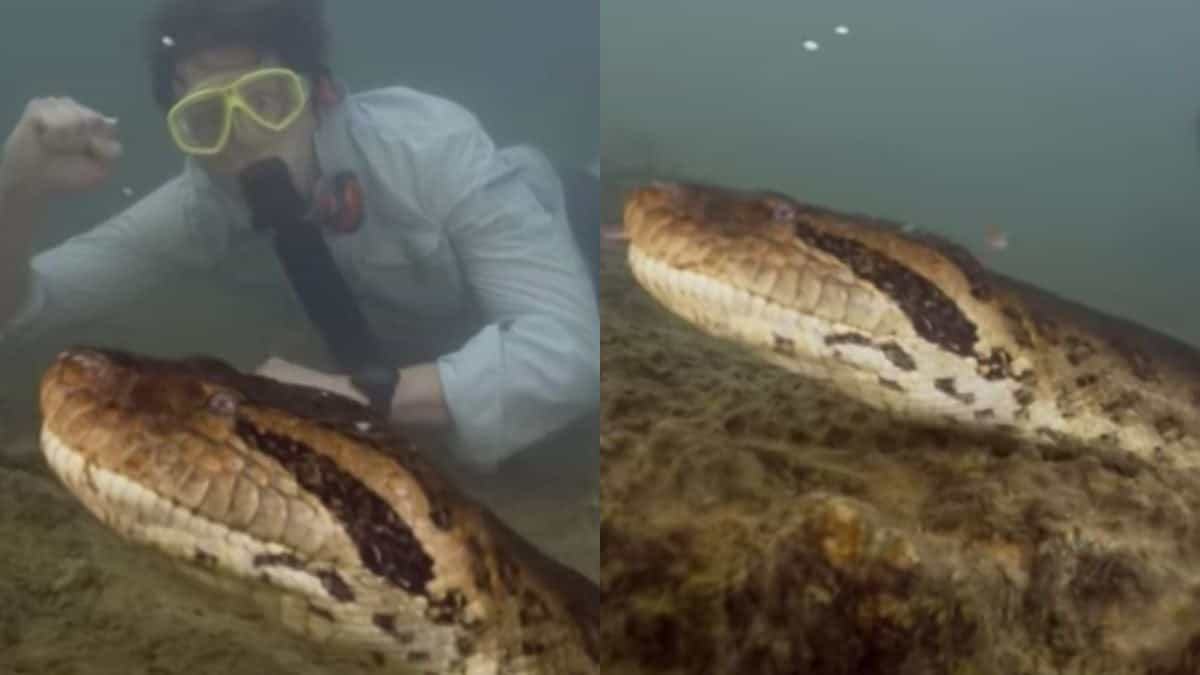Show table of content Hide table of content
The world of scientific discovery never ceases to amaze us, especially when celebrities unexpectedly become part of groundbreaking findings. In an extraordinary turn of events, a new species of giant anaconda has been identified during filming for a National Geographic documentary featuring Hollywood star Will Smith. This remarkable serpent, previously unknown to science, was encountered in the remote Amazonian rainforest, showcasing yet again how much of our planet’s biodiversity remains undiscovered.
Will Smith’s unexpected contribution to scientific discovery
In 2023, the team behind National Geographic’s documentary series “Pole to Pole” ventured deep into the isolated region of Bameno, Ecuador. Will Smith, serving as the show’s host, accompanied researchers and local Waorani hunters on what would become a historic expedition. The crew had no idea they were about to make a discovery that would send ripples through the scientific community.
Professor Bryan Fry from Australia’s University of Queensland led the scientific component of this expedition. His team was documenting the relationship between indigenous communities and local wildlife when they encountered something extraordinary – a massive anaconda specimen unlike any previously documented by science.
The most impressive specimen measured an astonishing 6.3 meters in length, potentially making it one of the longest anacondas ever recorded. Such discoveries remind us that scientists discover new predatory creatures in unexpected places, from ocean depths to remote jungles.
For Professor Fry, this encounter represented “the pinnacle of his career” – a sentiment that underscores the significance of finding a new species in today’s extensively explored world. The discovery was detailed in a comprehensive study published in MDPI Diversity on February 16, 2024, confirming the uniqueness of this anaconda variant.
Ancient species hidden in plain sight
What makes this discovery particularly fascinating is that these anacondas belong to a lineage estimated to be approximately 10 million years old. Scientists had previously classified these massive snakes under the umbrella term “green anaconda,” but genetic analysis of the specimens encountered during Smith’s documentary revealed something unexpected – there are actually two genetically distinct types.
This revelation demonstrates how even well-known species can harbor hidden diversity. Like ancient artifacts sealed for millennia that suddenly come to light, these anacondas have existed alongside humans for generations, yet their true identity remained concealed from scientific classification.
Animals A female sea lion refuses to mate with a male, causing a fight and the closure of the zoo.
Serpents have inhabited Earth for approximately 170 million years, evolving and diversifying throughout epochs. The newly identified anaconda variant has likely been evolving separately in its isolated Ecuadorian habitat, away from human interference and scientific observation.
The remote location of Bameno plays a crucial role in this story. This isolated region features minimal human presence, allowing wildlife to thrive undisturbed. The shallow waters of the area provide ideal conditions for these massive aquatic predators to hunt and reproduce without detection by the outside world.
Nature’s undiscovered wonders and celebrity spotlight
This remarkable finding serves as a powerful reminder of how much remains unknown about our planet’s biodiversity. Despite living in an age where information seems limitless and accessible, Earth continues to harbor secrets waiting to be uncovered. The anaconda discovery proves that significant biological findings can still occur, even regarding large, charismatic species.
Will Smith’s involvement in this scientific breakthrough highlights the unique intersection of entertainment and research. Celebrity participation in nature documentaries brings mainstream attention to conservation efforts and scientific exploration. The actor’s social media platforms, with millions of followers, have helped publicize this important discovery to audiences who might otherwise never engage with scientific content.
Animals A hammerhead shark crashes down from the sky in South Carolina, halting a disc golf game.
Unlike shocking instances where animal abuse makes headlines, Smith’s documentary showcases how media can positively impact wildlife by increasing awareness and scientific knowledge. The footage captured during “Pole to Pole” provides valuable visual documentation of these elusive creatures in their natural habitat.
The indigenous Waorani hunters’ knowledge proved invaluable throughout this expedition. Their familiarity with local ecosystems guided researchers to areas where these giant snakes could be found, demonstrating the critical importance of traditional ecological knowledge in modern scientific discovery.
Beyond the giant anaconda: implications for conservation
This discovery extends far beyond taxonomic classification. Understanding the genetic diversity within anaconda populations holds significant implications for conservation strategies. Species previously considered homogeneous may require specialized protection measures once distinct genetic lineages are identified.
The timing of this finding is particularly relevant as rainforest habitats face increasing pressure from human activities. The Ecuadorian Amazon, home to these newly identified anacondas, confronts threats from deforestation, resource extraction, and climate change.
Animals A wild elephant enters a convenience store and raids the food aisle.
Scientists hope this high-profile discovery might strengthen protection efforts for the region. Charismatic species like giant anacondas can function as conservation flagships, garnering public support for habitat preservation initiatives that benefit countless other species sharing these ecosystems.
The scientific value of this discovery extends to potential biomedical applications. Anacondas produce potent compounds in their venom and digestive systems that interest medical researchers. These biological substances might contain molecules with pharmaceutical potential, making biodiversity preservation not just an environmental imperative but a medical one as well.
As we marvel at this remarkable discovery facilitated by an unexpected collaboration between Hollywood and science, we’re reminded that our planet’s greatest treasures often remain hidden in plain sight. Each scientific expedition into remote regions holds the potential for discoveries that transform our understanding of the natural world.



did Will Smith Slap the snake?
you know he did, if Hollywood was involved